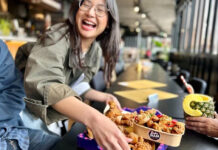
If you’re afraid of turning into “one of those families” we’ve all seen aboard planes with squalling, unruly children, don’t worry – with a little forethought and preparation you can get to your holiday destination with minimal stress and a happy family. Here’s how:
Sweat the Details Before you Travel
When you’re travelling with small children, the details of your vacation can mean the difference between success and disaster.
GREAT IDEAS WHEN PLANNING:
Aim for direct flights so you can avoid changing planes. If you have to make a change, avoid short layovers that give you too little time to get from gate to gate; conversely, avoid long layovers that require lots of idle time in airports. If your child is restless before they get on the plane, the flight will be a disaster.
When you make your reservations, ensure you provide the agent with the ages of all passengers. You may learn some important rules, such as:
• Regulations allow only one lap-child per adult. If you’re traveling with two children and only one adult, one child will require a seat of his own.
• Some airlines don’t allow newborns to fly so check age requirements.
• Some airlines offer discounted prices for children’s tickets.
• Most airplanes have only one extra oxygen mask in each row, which means you can only seat one lap-child per row. If two adults are traveling with two children under two, consider sitting across the aisle from each other, or in the seat directly behind.
• Some airlines count car seats or strollers as extra baggage.
If your child falls asleep easily, try scheduling travel during your child’s nap or sleep times. If you have a finicky sleeper, on the other hand, avoid traveling during usual sleep times as your baby may just stay fussy and awake.
Reserve your seats in advance to be sure your entire party sits together. If you have an infant, ask for the bulkhead (front row) and request a bassinet.
Contrary to popular advice, it’s best to avoid the bulkhead with older babies and toddlers because these seats offer neither under-seat space nor seat pockets, so you’ll have to store all your toys and supplies in the overhead compartment. The food trays in the bulkhead also pop up from the armrest, effectively trapping you in your seat when food is served.
Don’t put your child in the aisle seat as the food cart and passengers carrying luggage could injure him.
If you can afford to, buy a seat for your child and bring along his car seat. The familiarity may make it easier for him to sit still and even sleep. This only works when your child is able to fit comfortably in the tight seat compartments. A toddler with long legs will be scrunched between his seat and the seat in front of him. The added benefit of bringing a car seat is the safety feature of having your child in a protective seat on the plane. Make sure your car seat has a sticker that says it’s FAA approved for air travel so that it’s not turned away at the gate.
Visit your baby’s pediatrician a week before your trip to be sure he isn’t harboring an ear infection or other illness. If possible, avoid exposing your child to other children the week before the flight so he’s less likely to catch a kid-carried bug. If your baby will be taking any medication on the day of the trip (such as a decongestant or pain reliever), be sure to test it out before the day of travel to gauge any side effects.
Dress yourself and your child in comfortable layers of clothing. Airplanes are often cramped and temperatures can fluctuate.











